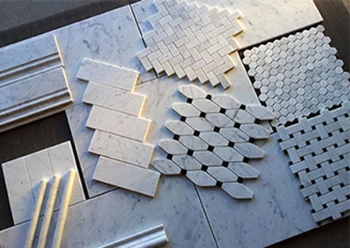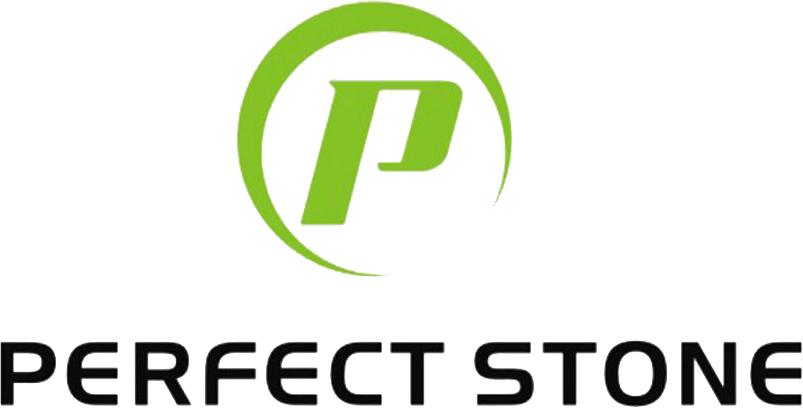Introduce
Ceramic slate, which means “sintered stone”, is made of natural raw materials through a special process, pressed by a press of more than 10,000 tons, combined with advanced production technology, and fired at a high temperature above 1200 °C, which can withstand cutting and drilling. Large-scale new porcelain materials for processing such as holes and grinding.
Ceramic slate is mainly used in the field of home and kitchen board. As a new species in the field of home furnishing, compared with other home furnishing products, slate home furnishing has the characteristics of large size, strong moldability, various colors, high temperature resistance, abrasion resistance, scratch resistance, anti-penetration, acid and alkali resistance, zero formaldehyde, environmental protection and health.
What material is slate
It is understood that the perfect stone slab is made of natural stone and inorganic clay through a special process, using vacuum extrusion molding and automatic closed computer temperature-controlled roller kiln firing at 1300 degrees. It is currently the thinnest (only 3mm), and the existing Maximum size (3600×1200mm).
To put it simply, slate is actually an upgraded version of ceramic tile 2.0. The slate is relatively large in size, and has the characteristics of anti-fouling, easy to take care of, moisture-proof and durable. It is also lighter and thinner and has a wide range of applications.

1. Ultra-high hardness, wear-resistant and scratch-resistant
Because the slate is pressed by 10,000 tons of high pressure, the Mohs hardness can reach 6-9 (the reference diamond is 10), which is almost the highest hardness decorative stone you can come into contact with. For example, rubbing with a steel brush will not leave marks.
2.No maintenance required
The slate is fired at a high temperature above 1200 ℃ for 72 hours. It will not change color, smoke, or release harmful substances when burned at high temperature.
3. Wipe clean
Sintered Stone is currently the best tile product in the industry, with the lowest water seepage rate of 3/1000, while the water seepage rate of slate is 2/10,000. The extremely high density makes it impossible for stains to penetrate.
For example, it is difficult for water and stains to penetrate, and it can be safely used in the bathroom and kitchen. The common stains like vegetable soup and vegetable juice stick up, and wipe it off with a damp cloth.
4. Super corrosion resistance
Quartz stone can only withstand light concentrations of acid and alkali, artificial stone can only accept daily lotion, and natural marble will be corroded by acidic substances such as lemon juice.
5. Arbitrary processing
Breaking the application boundary, the company has moved from decorative materials to applied materials, and the design, processing and application are more diverse and extensive to meet high-standard application needs. It can be mounted on the wall or on the ground, and can even be used as a curved shape, as a desk, as a kitchen countertop and a dining table!

Slate wall/floor wet sticking process
- Elastic line division: After the base layer is processed according to the wall base layer treatment and fine leveling process, determine the sub-grid elastic line and the pop-up reference line, and set the standard point of the finished surface thickness to control the surface layer thickness and vertical flatness .
- Brushing the interface agent: Use a roller to evenly brush the interface agent on the wall/ground sticking surface, and let it stand for 2 hours before sticking.
- Preparation of bonding material: The mixing ratio of the adhesive and water should be adjusted according to the product manual, stir evenly with a slow-speed electric stirrer, let it stand for 5-10 minutes, and then use it after a little stirring.
- Cleaning of the sticking surface: There should be no dust and foreign objects on the sticking surface to avoid the influence of the sticking effect. It is advisable to use a sponge to clean the sticking surface, and pay attention to check whether the board has cracks.
- Adhesive construction: apply a layer of uniformly stirred adhesive on the bonding surface of the plate and the base surface, and then use a toothed scraper to scrape the glue at an angle of 30°. The direction of the tooth shape of the plate and the base surface adhesive should be parallel. Chamfer the adhesive on the four sides, and the thickness of the adhesive on the base layer and the board should be 3-6mm; it should be uniform, full, and without interruption.
- Paving of rock slabs: When the rock slabs are pasted during construction, they should be pasted along the reference line in the order from bottom to top and from inside to outside; two or more hand-pump-type steel frame suction cups should be used for handling; the adhesive application is completed The slate should be pasted to the base surface within the next 20 minutes; the paving should be protected by foot pads.
- Flatness adjustment: After the rock slab is pasted to the base surface, knead and press it first, and then use a vibrator to adjust the rock slab to be flat. It is advisable to use a pad to adjust the levelness or verticality of the surface material, and use a leveler base between the rock slabs. Leveling with the insert, and adjusting the width of the slab gap should use a gap expander.
- Gap cleaning: The ground construction should be enclosed before the adhesive is finally set, and it is strictly forbidden to step on it; after the adhesive is applied, the adhesive adhering to the gap should be removed with a cleaning tool before the adhesive is initially solidified but not completely solidified (within 24-48 hours). . The gaps should be uniform and the width of the gaps should be consistent. The gap filling material should use a flexible caulking agent, and the width of the gaps should not be less than 3mm.
- Surface cleaning: If the surface of the slate is found to be contaminated after pasting, the dirt should be removed without causing displacement of the slate. After 7 days of construction, a neutral detergent can be used for thorough cleaning.


